Here is a nice little hand embroidered monogram finished as I ratchet myself up to getting on with the other end of Balliol altar cloth. This lovely orangey-red (DMC 350) was much easier to sew than white on white, both in electric light and in the poor quality of daylight the bad weather has produced. But the hours of daylight are visibly increasing and I now not only leave work but also get on the bus in daylight which helps lift the spirits and clear away a few winter cobwebs.
I like to embroider flowers appropriate to the baby’s birthday and of course you’re a bit limited at the end of October unless it’s chrysanthemums and michaelmas daisies (done here) but then I realised how berries and seed heads were also rather lovely and often more interesting in shape than blousey flowers. Angie Lewin, a Norfolk based printmaker, almost single-handedly, has raised the status of lowly weeds, grasses, seeds and fruiting bodies, so that it’s almost impossible any more to look at a patch of waste ground or roadside without seeing little bits of beauty here and there. Her book is full of inspiration for the embroiderer as her lines are clear and detail uncluttered – even the cover is inspirational.
So, it’s back to the school nature table in my mind’s eye and call up memories of teasels and thistles, the seed cases of tennis racket-like honesty and those twisted pendents of deadly laburnum. All the parsley family lend themselves to embroidery, from the frondy wild carrot, through cow parsley and wild angelica, to poisonous hemlock (purple-botched stems and unpleasant foetid smell announce this as a plant to be wary of)) and the giant hogweed whose architecturally impressive skeletons line road sides and pathways throughout winter. Beware of bringing hogweed into the house for drawing sessions as the flower attracts the undesirable carpet beetle which will quite happily leave the plant and snuggle up in your rugs and carpets. Fortunately its smell is sufficiently unpleasant to make you think twice about giving it houseroom.
Well, I say that, but when I was a student, I once lived in a flat at the top of a house (one of those described by Gerard Manley Hopkins [Balliol] as part of the base, brickish skirt thrown up in N.Oxford to provide for the progenitive needs of college fellows once they were allowed to marry). This particular house was occupied by an Oxford don who was a serious botanist (leaves not flowers in his substantial North Oxford garden and leafy plants on the window sills in such profusion that little light reached into the room). His daughter (later also a biologist) had a spectacular skeleton of what I always thought must have been a giant hogwood on display in her bedroom – I always thought this was incredibly enviable and to be copied whenever space permitted. Now I’m rather glad I never got round to going it. I would inevitably have chosen a specimen with a voracious crop of carpet beetles whose action would probably have gone unnoticed until substantial chunks of carpet had disappeared. Phew, you do have to understand nature before you give it house room willy nilly.
But back to the embroidery, plantain, in its various manifestations – ribbed, hoary or buck’s-thorn, is also fun to sew with its little conical flower head framed at the bottom third by long pale stamens; bistort looks similar but the long thin receptacle is covered completely by tiny flowers making it more fluffy all the way up. Wild clematis/ Old Man;s Beard offers lots of scope in a rambling Autumn garland. In the top right of the monogram above, I’ve attempted an approximation of common sorrel. It’s hard to believe that in Henry VIII’s time the leaves of this plant were highly prized – the particular sourness was a common flavouring used where we would today use lemon, especially with fish. Its juice was also used to remove ink or iron stains from linen – both the sharp taste and the stain removing properties resulting from the presence of oxalic acid. Its latin name, Rumex acetosa (rumo: to suck; acetum: vinegar) comes from the fact that the Romans would suck the leaves to assuage thirst. How times change. I might perhaps test its rust removal properties but I think I shall ever be grateful that the lemon was introduced into England.
No autumn hedgerow would be complete without hips and berries which are both satisfying shapes to embroider and then there are always a few sprig of leaves which stubbornly stay put on the branch and which I rather enjoy sewing. I opted for a rather austere set of initials in the middle as I thought as little Martha grew she should at least have a clear set of the letters of her name to familiarise herself with when she gets started on learning the alphabet.
I have now corrected the dob to 27.10.13.
Post script to Whitework K in Renaissance style : I have now made the embroidery up into a cushion with white rick rack braid around the edge.
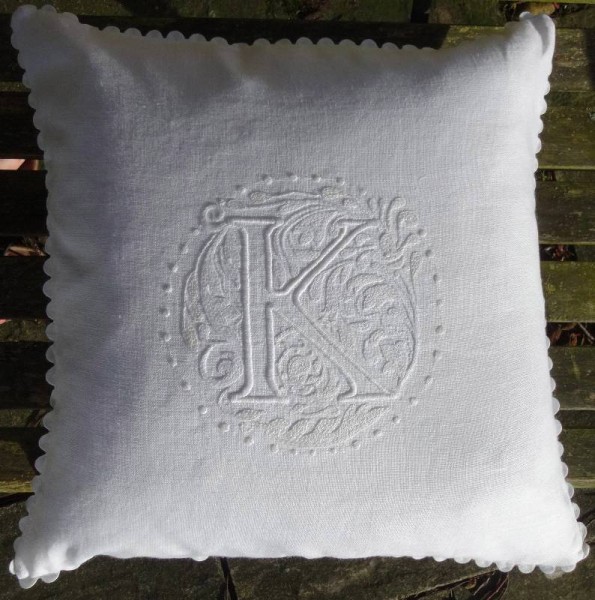
K monogram cushion in whitework: white embroidery thread on white linen (hand embroidered by Mary Addison)

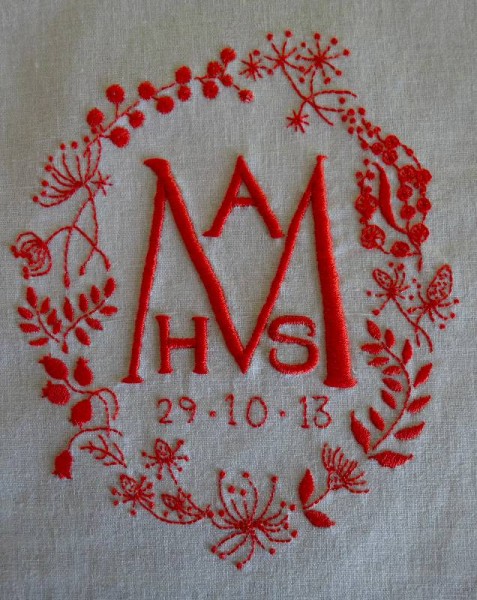
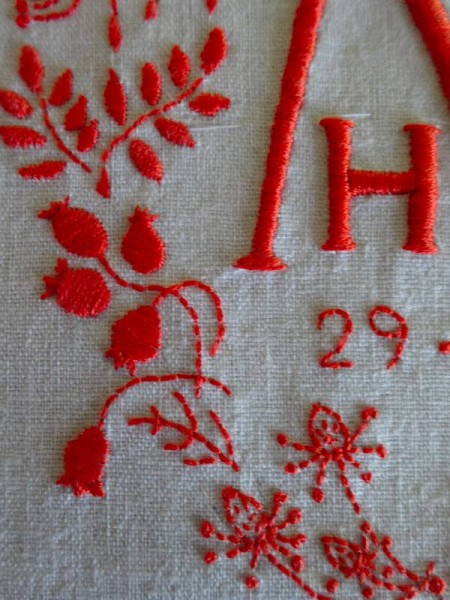
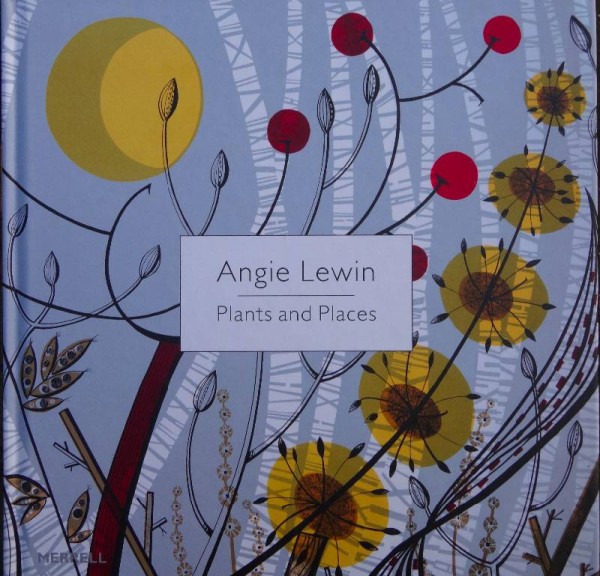
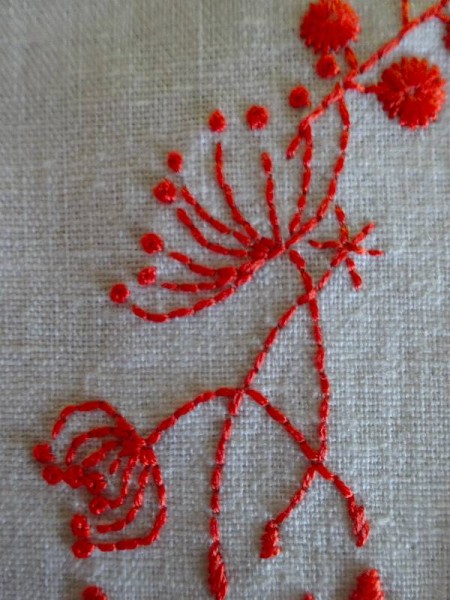
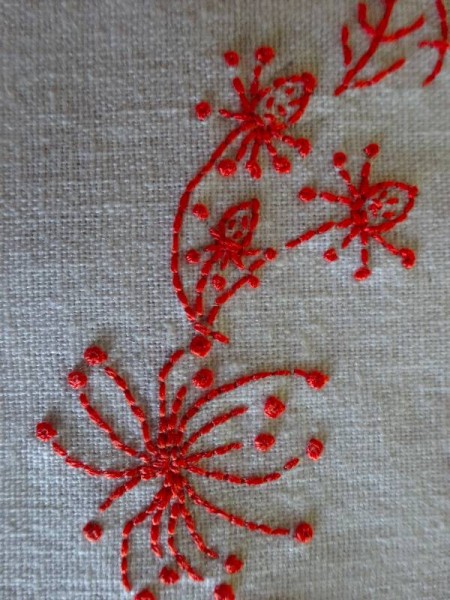
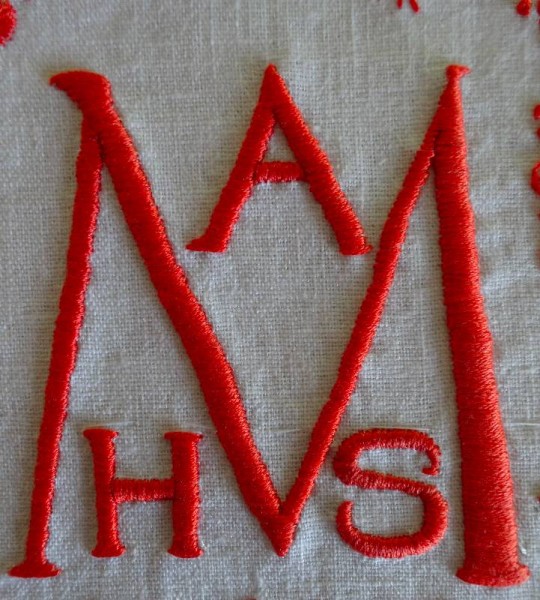
5 Comments
Your embroidery is beautiful. Thank you do much for sharing your work. I have just discovered your blog and have had a very enjoyable time going back and reading through your previous entries.
How lovely to hear from you. I’m so glad you’ve enjoyed the blog and trawling back through the old posts. Thank you for taking the time to comment.
Mary
Can I simply just say what a comfort to uncover somebody that truly understands what
they’re discussing on the net. You definitely know how to
bring an issue to light and make it important.
More people really need to read this and understand this side of your story.
I can’t believe you are not more popular given that you definitely possess the gift.
What i don’t understood is if truth be told how you are not actually a lot more smartly-favored
than you might be right now. You are very intelligent.
You realize thus significantly relating to this
matter, produced me for my part consider it from numerous various angles.
Its like women and men are not interested unless it’s one thing to do with Lady gaga!
Your personal stuffs great. At all times handle it up!
I am genuinely grateful to the owner of this website who has shared this fantastic piece of writing at at this place.
2 Trackbacks
http://Www.Technology-Vendors.ipt.pw
Monogram for a new baby – Addison Embroidery at the Vicarage
universitas Terbaik untuk jurusan teknik Informatika
blog topic